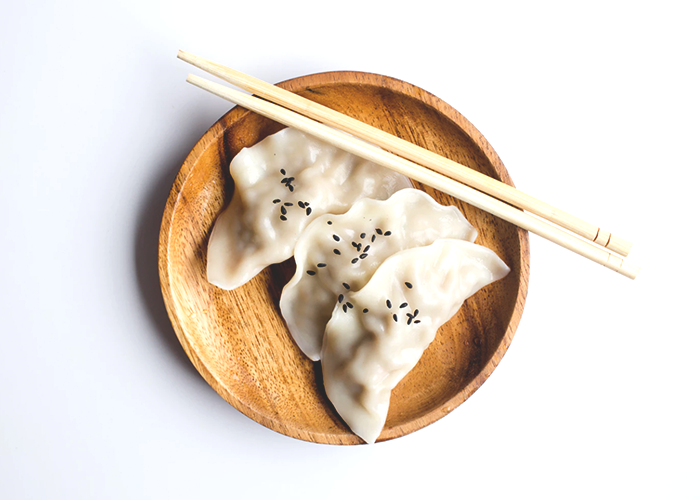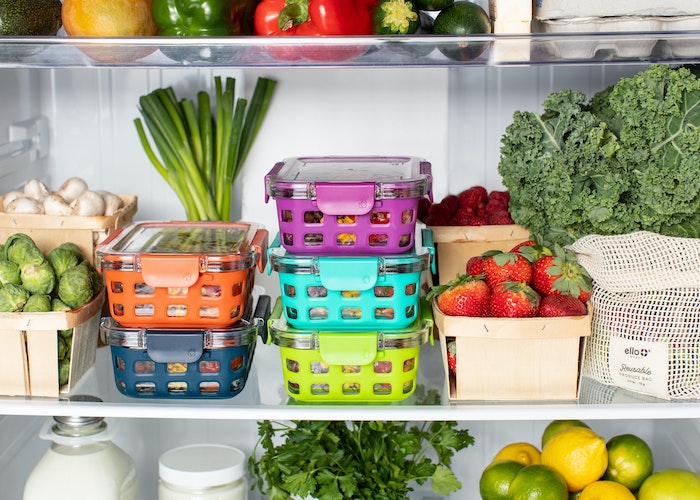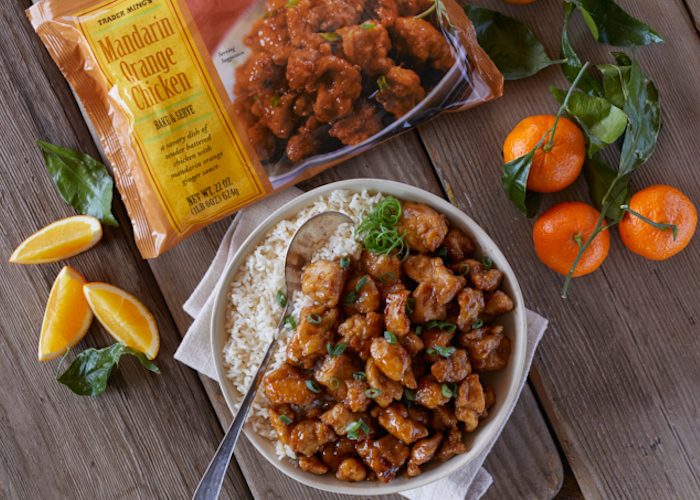5 Essential Budget Ingredients I Get From My Local Asian Market

My family has never had intense grocery store loyalty. Growing up, we just went to the one that was closest: Pick N’ Save, Meijer’s, Publix, Econofoods, any supermarket that had a magazine section where my sister and I could read while my parents piled the cart with family packs of chicken thighs, ten-pound bags of onions and potatoes, and a miscellaneous assortment of whatever green vegetables were on sale that week.
The real adventure came on Sunday mornings, when we piled into the car with all the canvas bags we owned, two coolers, and mom’s dry cleaning, and drove to the nearest Asian market two towns and an hour away. My mom would buy my sister and me each a box of Pocky before she sent us to pick out our school snacks for the week: little individual lychee jellies in a giant plastic tub; crisp, sesame-toasted seaweed strips; frosting-stuffed biscuits the size of my thumb.
I know those Sundays are not a universal experience. Some of the most kitchen-savvy people I know still feel bewildered by international or specialty markets — and I completely get it. I think there are a number of common misconceptions surrounding the idea of them: that “specialty” implies a higher price tag, that the ingredients sold are difficult to cook with, that it requires some sort of acquired taste or instinct. But shopping at your local international markets can be a great way to help keep your grocery costs low — and beyond that, can also spark some truly lovely meals.
At my local Asian market, I never spend over $20 on a purchase — honestly, I rarely spend over $15 — and the non-perishables that I get usually last me the month. No matter what else is on my list, these are the top five budget- and meal-savers that I pick up every time.
1. Rice/Fresh Noodles
The first thing that I ever learned to make was rice, in the little ceramic electric cooker that my parents brought from China when they first came to the United States. It was white, with pink swooping flowers that I thought were the prettiest pattern in the world, and when it got too hot, it would screech like a tea kettle. I grew up eating rice with dinner every night, and it wasn’t until I left home for boarding school that I realized not all rice was created equal. My dining hall in high school served rice in a giant vat, steaming and mushy before the meal even started — nothing like the fragrant, fluffy bowls of it that we had at home.
As I’ve started cooking more for myself, I’ve realized that high-quality rice can mean the difference between a good dinner and a great one, and most Asian markets sell restaurant-sized bags of jasmine and basmati rice for half the cost of a tiny bag at the grocery store. And if you prefer your carbs in noodle form, fresh ramen or udon can be an insanely inexpensive way to make a mundane meal special. At my favorite restaurant supply store in Chinatown, a five-serving pack of fresh soba noodles (they literally pull the dough at this huge counter at the front of the store and cut the noodles as you order them) costs $1.50 — less than a box of Barilla pasta.
2. Oils/Vinegars
High-quality oils are one of those things that I just didn’t see value in for the longest time. I still prefer to use generic butter in baking projects, and bulk-store olive oil definitely has a place in my pantry. But the more I cook, the more I’ve started to realize that having a couple of stellar seasoning oils and vinegars can be a gamechanger, and it doesn’t necessarily need to break the bank.
My staples are usually some sort of chili-spiked oil, ghee, sesame oil, a dark and a light rice wine vinegar. Sesame oil is one of those things that I grew up with, so I always keep a bottle of it in my pantry to fry eggs in or to finish off vegetables. But it’s also one of those things that has crazy-variable (and crazy-high) prices. At Whole Foods, a bottle can range anywhere from $12-17; and at the Econofoods down the street from my office, the cheapest bottle is $7, and is also alarmingly flavorless. My family’s favorite brand, Kadoya, is currently $10.20 on Amazon; the bottle in my pantry, which is three times larger, cost me $4.15.
3. Sauces/Condiments
This is a more general category than some of the other things on this list because I know that condiments are often an area where people’s tastes differ dramatically: but condiments at my Asian market are by and large sold more cheaply and in larger quantities than any condiment at a grocery store that isn’t a generic-brand ketchup. In my everyday cooking, I often end up “liquid” seasoning — that is, using a number of different sauces and condiments to season rather than dry spices — because I usually find grinding my own spices to be too time-consuming for a quick weekday meal (and so many pre-ground spices taste like dust with only vague ambitions of flavor). During my last shopping trip, I bought a jar of harissa, a tub of sesame paste (like tahini but made with unhulled sesame seeds — it taste a little richer, but is amazing whisked with a little rice wine vinegar, soy sauce, and miso and drizzled on top of roasted vegetables), and a container of red miso for under $10.
Sidebar: Incidentally, at this particular market, a jar of Jif ran for $10. No clue as to why.
4. Matcha/Tea
If I’m being honest, the only time I have ever used matcha was the one time I made green tea shortbread for a friend’s birthday; it has been languishing in my pantry ever since. But for those who love it, or who tout its health effects/Instagrammability, it is astronomically cheaper to buy from an Asian specialty market than at the grocery store or online. I also generally buy most of my tea there. It might be budget-goggles, but I swear I can get more steepings out of the tea that I get in bulk from H-Mart than from any Tazo or Twinings I’ve tried (though admittedly, Tazo has much more creative copy).
5. Tofu/Soy Products
When I was in elementary school, and when my grandparents still lived with us, my grandpa would make soy milk every Monday afternoon: soak, blend, strain, heat, strain again. Whenever I got home from school, he’d serve me a cup with a little sugar spooned in: foamy, still-warm, velvety and sweet. It was glorious.
While no soymilk I’ve purchased has ever quite lived up to the potency of that nostalgia, I have found that the fresh soymilk that I buy from my local Asian market is still markedly better than the stuff that comes in the carton. It performs more like traditional milk when it’s used in baking, it tastes good alone and even better with cereal, and even though it expires a little faster, it is much cheaper ($2 for a half-gallon) than most of the non-dairy milks at my grocery store.
I will be the first to admit that both fresh soymilk and tofu are two of the things that might be the most “acquired-taste”-y on this list, particularly given all the conversations surrounding the effects of soy products on estrogen levels. But as a vegetarian, I find tofu to be a cheap, easy source of protein, and there are so many different brands offered at my local Asian market than at my grocery store that I can buy different kinds for different dishes. Silken tofu for scrambles, extra-firm tofu for pan-frying, dried tofu to soak up sauces or for dumpling fillings, etc.
*****
In some ways, I know that my love for Asian markets is rooted in their home-away-from-home-ness: the only place where my grandparents felt comfortable speaking in public; the place where I first learned to navigate a grocery store; where my mom could haggle over the price of produce. But I also love them because I genuinely think that they are an excellent, budget-friendly resource for home cooks to find both familiar and new pantry staples.
Julie Zhou is a writer, editor, and born-and-bred Midwesterner. She loves unreliable magazine quizzes, cast-iron pans, and the Oxford comma. She hates the question, “No, but where are you *really* from?”
Image via Unsplash




